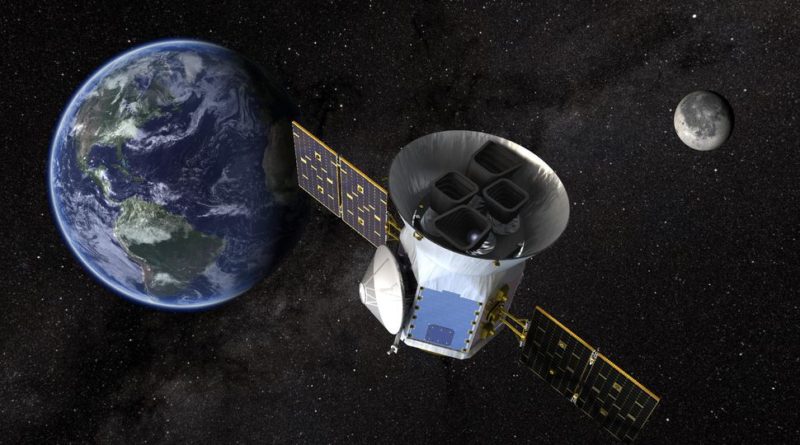Deflating Planets May Explain Why Hot Super Earths Exist
stargazers have found a plenty of hot Super Earths, which are a couple of times the mass of the Earth as compare to Super Earth, that sit exceptionally close to their stars
What is Super Earth
A Super Earth of high density is believed to be rocky and/or metallic, like Earth and the other terrestrial planets of the Solar System. A Super Earth’s interior could be undifferentiated, partially differentiated, or completely differentiated into layers of different composition.
Space experts have found an unusual, Neptune-sized exoplanet found under 100 light-years from Earth that is shedding its air so rapidly it might help specialists at last answer the long-standing inquiry: Where did all the hot Neptunes go?
As indicated by the new research, distributed December 13 in the diary Astronomy and Astrophysics, the contracting scene, named GJ 3470b, is quickly losing its climate as it’s barraged by a constant flow of fiery charged particles from its red diminutive person have.
The disclosure — made with the assistance of NASA’s relentless Hubble Space Telescope — proposes that in spite of the fact that Neptune-sized exoplanets can exist briefly extremely close to their host stars, they may not keep going long. Rather, these planets could lose a critical part of their mass through dissipation driven by extreme outstanding breezes. On account of GJ 3470b, the specialists think solid breezes from its dynamic host star have stripped the planet of up to around 35 percent of its unique mass through a mind-blowing span.
“This is the first run through a planet has been seen to lose its climate so rapidly that it can affect its advancement,” said lead creator Vincent Bourrier, a space expert from the University of Geneva (UNIGE), in an official statement.
An Oasis in the Desert
In view of our own close planetary system, space experts normally separate planets into three general classes: rough earthbound planets (like Earth and Mars), huge gas monsters (like Jupiter and Saturn), and solidifying ice goliaths (like Uranus and Neptune). Be that as it may, throughout the years, analysts have found a large number of exoplanets around different stars that appear to break these well-known molds.
astronomers have discovered a plethora of hot Super Earths
Specifically, since the principal affirmed exoplanet was found only a couple of decades back, analysts have revealed an astonishing number of Goliath planets, named hot Jupiters , found greatly near their host stars. On the opposite end of the range, stargazers have found a plenty of hot super-Earths, which are a couple of times the mass of the Earth, that sit exceptionally close to their stars. Be that as it may, stargazers once in a while discover medium-sized planets (or hot Neptunes) in comparative close-in circles.
However, for what reason does this void of hot, medium sized planets — the supposed “hot Neptune desert” — exist?

“As of recently, we didn’t know of the pretended by the vanishing of climates in the development of the desert,” said Bourrier. Be that as it may, in light of this new finding, hot Neptunes may have wilted away into smaller than normal Neptunes (an elective term for powerful super-Earths), or even disintegrated straight down to their rough centers. “This could clarify the bounty of hot super-Earths that have been found,” said co-creator David Ehrenreich, a space expert at UNIGE.
By demonstrating that a functioning star can take heaps of mass from a medium sized planet close to the edge of the hot Neptune desert, the analysts think they’ve at long last made sense of why so couple of hot Neptunes have been found, while loads of littler planets, called super-Earths, have been found in a similar bubbling neighborhood.
“This is the indisputable evidence that planets can lose a critical part of their whole mass,” said co-creator David Sing, a teacher at Johns Hopkins University, in an announcement. “GJ 3470b is losing a greater amount of its mass than some other planet we [have] seen up until now; in just a couple of a long time from now, half of the planet might be gone.” And if GJ 3470b loses a large portion of its mass (it’s as of now around 14 Earth masses), it will make the change from hot Neptune to super-Earth.
Investigating the Desert
GJ 3470b, which sits around multiple times nearer to its host star than Mercury is to the sun, isn’t the first vanishing Neptune-sized planet at any point found. Actually, only a couple of years back, space experts found a comparative planet named GJ 436b that is losing its environment simply like GJ3470b, though at a much slower rate (around multiple times slower). To break down the mass loss of both these planets, the analysts followed the hydrogen that was getting away from their airs.
In any case, space experts can only with significant effort recognize hydrogen from more than around 150 light-years away. This is on the grounds that the hydrogen signals they are searching for fall in a wavelength run that is hindered by interstellar gas, which penetrates the space between stars. In any case, luckily, the scientists have an arrangement to search out increasingly far off contracting hot Neptunes later on.
“Helium will grow the scope of our studies,” said Bourrier, “the high affectability of the James Webb Space Telescope ought to enable us to recognize helium getting away little planets, for example, smaller than normal Neptunes, and finish our perceptions of the edge of the desert.”
Along these lines, until further notice, we’ll must be happy with only a couple of known instances of contracting hot Neptunes. In any case, remember, a lot more may prowl just in
Also Read :
NASA , SpaceX offers Marvel exhortation on sparing Tony Stark missing in space
NASA क्रू के साथ पहली बार जून 2019 में लॉन्च करेगा स्पेसX रॉकेट
Andhra may get India’s first Hyperloop between Vijayawada and Amaravati





